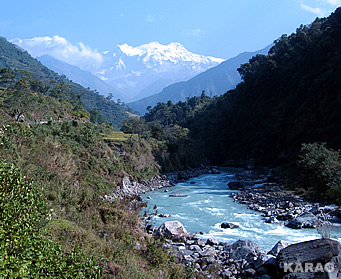 |
Nepal Information |
|
 |
Nepal Information |
|
|
 |
| Nepal's
people |
 |
Nepal
has a population of more than 28 millions (2016), made of different races
and tribes. The Gurungs and Magars live mainly in the west and the southern
slopes of Annapurna, Himalchuli and Ganesh Himal mountains.
The Rais,
Limbus and Sunuwars inhabit also the slopes and valleys of eastern
mid hills.
The Sherpas live in the Himalayan region up to an average altitude of 4,570 m.
The Newars constitute an important ethnic group in the capital valley of Kathmandu.
There
are Tharus, Yadavas, Satar, Rajvanshis and Dhimals in the
Terai region.
The Brahmans, Chhetris and Thakuris are spread generally over most parts
of the Kingdom.
Many
different ethnic groups have their own languages for dialects, but Nepali,
the national language, written in Devenagari script, serves purposes of
the the Kingdom's lingua franca in Nepal. the educated people speak and
understand English as well.
| Population
Distribution |
 |
| Nepal's
religion |
 |
 |
Hinduism
and Buddhism constitutes two major religion of Nepal sharing between them
some 87% and 8% of the total population. Both these co-religionists are
bound together by a sense of fellow feeling and bonhomie particularly displayed
in their worship of common deities and joint celebration of many festivals
belonging to either religion culture. |
Kumari
, the Virgin Hindu Goddess, for instance, is selected from a Buddhist
clan. The Moslems form the third largest religion group with 3.5 percent.
The
temples and stupas are rich repositories of wood carvings, metal works,
terra-cotta and stone culptures.
| Information
on Nepal |
 |
|




